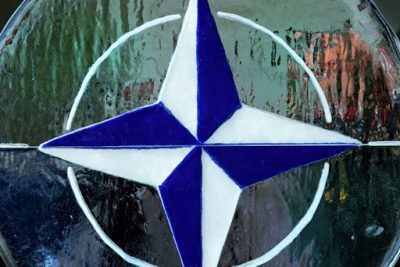New US Command for NATO Naval Battle in Europe

A new NATO command was born in Norfolk (Virginia, USA): the Norfolk Joint Force Command, called “Atlantic Command,” is a clone of the Naples Joint Force Command with headquarters in Lago Patria (Naples). Its constitution was approved by the North Atlantic Council at the Defense Ministers level (for Italy the first Conte Government’s Minister Elisabetta Trenta ), in June 2018.
Just as the NATO command in Naples is under the orders of the Admiral who commands the US naval forces in Europe including the Sixth Fleet, the NATO command in Norfolk is under the orders of the Admiral who commands the US Second Fleet. The Second Fleet’s “area of responsibility” covers the Western half of the Atlantic Ocean and the Arctic, while the other half is covered by the Sixth Fleet. The new “Allied” Norfolk command is, therefore, de facto part of the Pentagon’s chain of command as the command in Naples.
What was the motivation to create the Atlantic Command? To lead the “Fourth Battle of the Atlantic” after the two world wars and cold war battles against “Russian subs that threaten the maritime communication lines between the United States and Europe in the North Atlantic.”
According to this strategy, enunciated in particular by Admiral Foggo who was head of the NATO command in Naples, Russian submarines would be ready to sink the ships connecting the two sides of the Atlantic, so as to isolate Europe before a Russian attack. A Hollywood movie scenario about the Second World War, in which German U-boats sink merchant ships bound for Europe from the United States.
Political fiction scenario: while the Battle of the Atlantic in World War II lasted 5 years, the “Fourth Battle of the Atlantic” would last 5 minutes. If Russian submarines, absurdly, sank United States and their European allies’ ships in the Atlantic, it would be the beginning of a total war with the use of nuclear missiles and bombs by both sides.
What then would be the role of the Atlantic Command? “The North Atlantic is vital for the security of Europe” – declared NATO secretary-general Stoltenberg:
“Our new Atlantic Command will ensure crucial routes for reinforcements and supplies from North America to Europe remain secure.”
In other words: Europe, exposed to what the US and NATO call “Russian aggression,” would need the United States to continuously send its military forces, armaments, and supplies in order to resist. The European allies’ naval forces must therefore support those of the United States and, under orders of the new Atlantic Command, hunt phantom “Russian subs who threaten the maritime communication lines between the United States and Europe in the North Atlantic.”
It is a kind of naval battle game. Very expensive since it involves the addition of other appropriations to the overall military expenditure of NATO countries, which already largely exceeds 1 trillion dollars a year in public money subtracted from the real needs of citizens. Very dangerous because it serves as a staging to feed the idea of the enemy in public opinion, that is Russia that threatens Europe and is preparing to isolate it by cutting its maritime communication lines with the United States.
By fabricating this scenario, the growing deployment in Europe of US forces and weapons, including nuclear arms, flanked by those of the European NATO countries is justified, with the consequence that Russia also increases its own forces, including nuclear weaponery.
Since the first Conte government approved the constitution of the new NATO Atlantic Command two years ago, we would like to know what the second Conte government thinks about it. We would also like to know if anyone in the Italian Parliament was consulted before Italy approved the constitution of the new NATO command, decided by the Pentagon; or at least if there is someone in Parliament aware of the fact that, in addition to the command of Naples under the orders of a US admiral, the Italian navy now also depends on that of Norfolk, also under the orders of a US admiral.
*
Note to readers: please click the share buttons above or below. Forward this article to your email lists. Crosspost on your blog site, internet forums. etc.
This article was originally published in Italian on Il Manifesto.
Manlio Dinucci is a Research Associate of the Centre for Research on Globalization.

